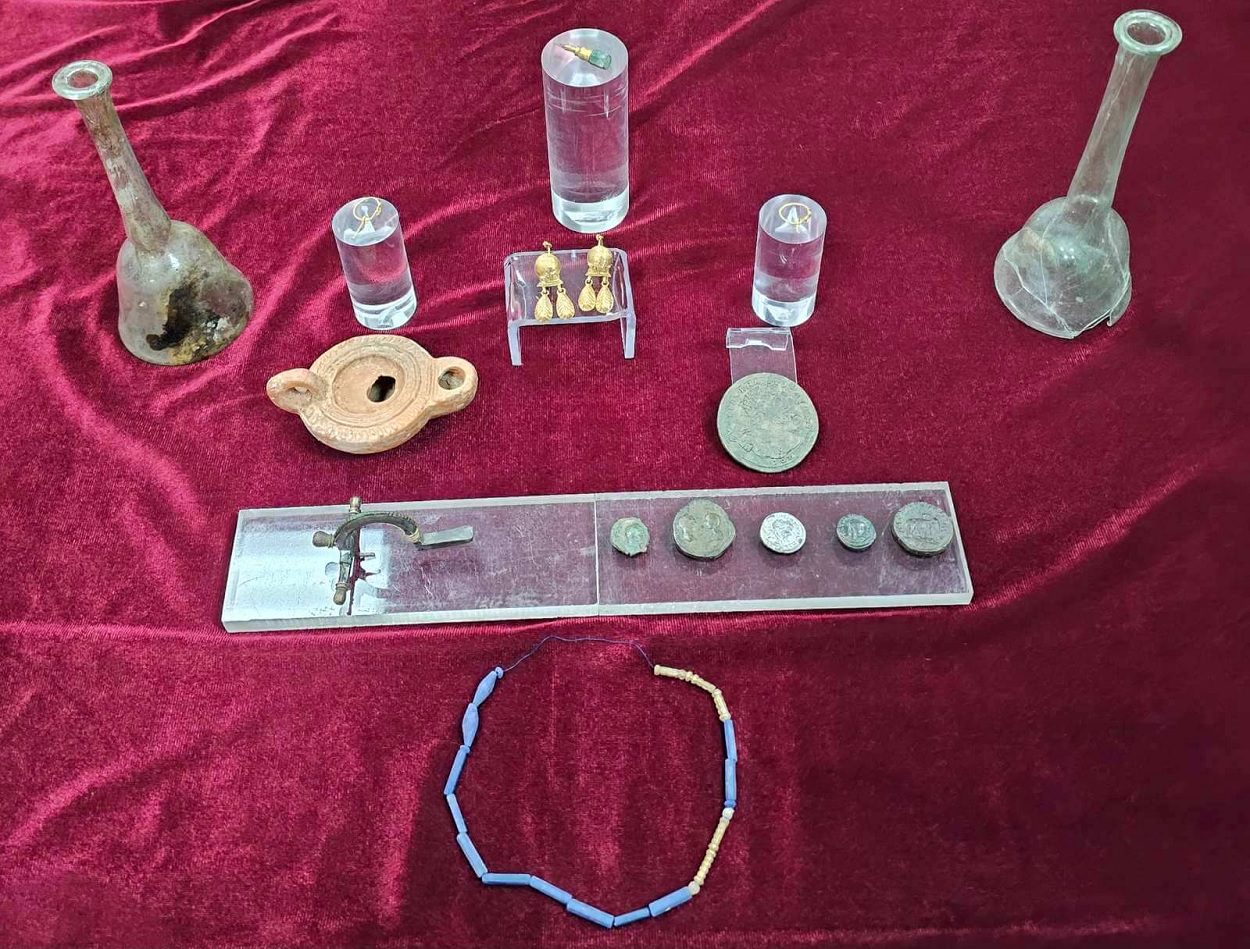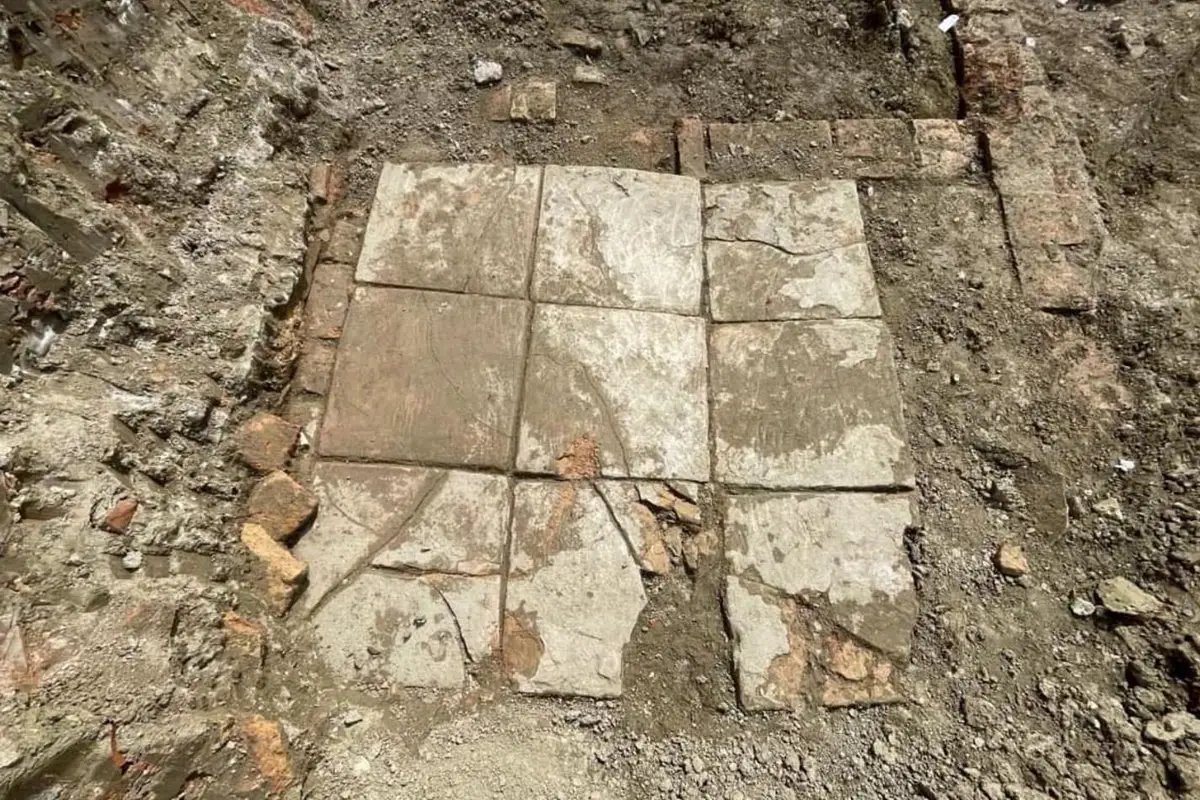Archaeology
Rare medallion of Caracalla among high status objects found in Roman cemetery

A press announcement by the Regional Historical Museum – Veliko Tarnovo, has revealed an extremely rare Roman medallion depicting Caracalla found near the village of Nova Varbovka in southeastern Slovenia.
Marcus Aurelius Antoninus, better known by his nickname of Caracalla, was Roman emperor from AD 198 to 217. His reign is most famously known for the Antonine Constitution, an Edict granting the status of Roman Citizen to all peregrinus (free men).
The medallion was uncovered in a cemetery used by wealthy landowners, who lived on estates in the administrative territory of Nicopolis ad Istrum during the 3rd century AD. High status grave goods, including coins, jewellery, and glass vessels were found in two masonry graves.
According to the announcement: “It can be assumed that the family were high-ranking residents of Nicopolis ad Istrum. Long-term studies of Nicopolis ad Istrum show that the rich landowners lived in their estates in the summer and returned to the city in the winter.”
Image Credit : Regional Historical Museum – Veliko Tarnovo
One of the graves contains the skeletal remains of a young child, who was found with a pair of gold earrings, child-size jewellery made using glass beads, a ceramic amphora, and two lacrymatory bottles made from glass. A lacrymatory, also called a lacrimarium, were small bottles typically used for collecting the tears of mourners at funeral ceremonies.
The second grave contains the remains of an adult man and woman, in addition to gold earrings, a gilt pendant with a bead, and a silver-plated fibula of several types of metal.
The most notable discovery is a rare bronze medallion of Emperor Caracalla, struck in the city of Pergamum in Asia Minor (present-day Turkey). One side of the medallion commemorates the emperor’s visit to the city in AD 214, which has inscriptions written in Ancient Greek.
Header Image Credit : Regional Historical Museum – Veliko Tarnovo
This content was originally published on www.heritagedaily.com – © 2023 – HeritageDaily
Archaeology
Archaeologists find Roman villa with ornate indoor plunge pool

Archaeologists from the National Institute of Cultural Heritage have uncovered a Roman villa with an indoor plunge pool during excavations at the port city of Durrës, Albania.
During antiquity, Durrës was founded by Ancient Greek colonists from Corinth and Corcyra.
The colony emerged into a major trading centre, which during the Roman period was annexed into the expanding territory of the Roman Republic following the conclusion of the Illyrian Wars.
By the 4th century, the city (named Dyrrachium), emerged as the capital of the Roman province of Epirus nova, covering the region of Ancient Epirus.
Image Credit : IKTK
Archaeologists excavating a former residential part of the ancient city have uncovered a high status Roman villa that dates from between the 1st and 4th century AD.
The villa interior contains an indoor pool, richly decorated with frescoes on the walls and mosaic flooring with tiles and inlays of marble, stone, glass and ceramics. Located adjacent to the pool are shallow square basins lined with waterproof mortar, believed to be the remains of an ancient water feature.
Within the northern area of the excavation site, archaeologists found a large brick floor from a thermae, a Roman bath, and further traces of walls from the wider complex.
In the western area, the team discovered fragments of relief stucco that was used to decorate the walls and ceilings of the villa. The reliefs depict anthropomorphic and floral motifs, further indicating the wealth of the villa inhabitants.
According to the archaeologists, the villa was destroyed by an earthquake in the 4th century, corresponding with ancient sources that describe a powerful earthquake causing buildings to collapse and the city defences to crumble.
Header Image Credit : IKTK
Sources : National Institute of Cultural Heritage
This content was originally published on www.heritagedaily.com – © 2023 – HeritageDaily
Archaeology
Archaeologists excavate medieval timber hall
Archaeologists from the University of York have returned to Skipsea in East Yorkshire, England, to excavate the remains of a medieval timber hall.
Recent excavations unearthed a timber hall measuring 5 metres wide by 16 metres long, which was surrounded by a large ditched enclosure.
The size and shape of the hall is marked by post holes, which the team plan to excavate further to provide new insights into the hall’s purpose and setting in the surrounding landscape.
The hall sits adjacent to a 13-meter-high mound, once presumed to be a motte and bailey castle. However, carbon dating has since revealed its age to be 1,500 years prior to the Norman Conquest era from during the Iron Age.
Dr Jim Leary, from the University of York’s Department of Archaeology, said: “The unearthing of timber buildings dating to the period between the collapse of the Roman Empire and the arrival of the Vikings, a time often referred to as the Dark Ages, is an incredibly rare and significant find.
“The discovery at Skipsea is particularly interesting because we know that the area was in the hands of the last Anglo-Saxon King of England, Harald Godwinson, and then later, after the Norman Conquest of 1066, it became the estate centre of the Lords of Holderness.”
Skipsea was once home to three freshwater lakes, Skipsea Bail Mere, Skipsea Low Mere, and Skipsea Withow Mere, linked to the River Hull through a network of tributaries. These lakes (long-vanished), began 10,000 years ago during the Mesolithic period, and continued into the medieval period.
The lakes were a constant draw to population groups throughout history, which has provided archaeologists with Mesolithic stone tools, animal remains, bone harpoons, and Bronze Age buildings and trackways.
Header Image Credit : University of York
Sources : University of York
This content was originally published on www.heritagedaily.com – © 2023 – HeritageDaily
-

 Ghosts2 years ago
Ghosts2 years agoZozo: The Ouija Board Demon
-

 Space2 years ago
Space2 years agoScientists claim to have found the answer what existed before the Universe
-

 Ghosts2 years ago
Ghosts2 years agoOld Coot of Mount Greylock
-
Archaeology1 year ago
New discoveries at Ekʼ Balam during conservation works
-

 General3 years ago
General3 years agoUC San Francisco engaging in horrifying experiments, organ harvesting of live babies in the name of “science”
